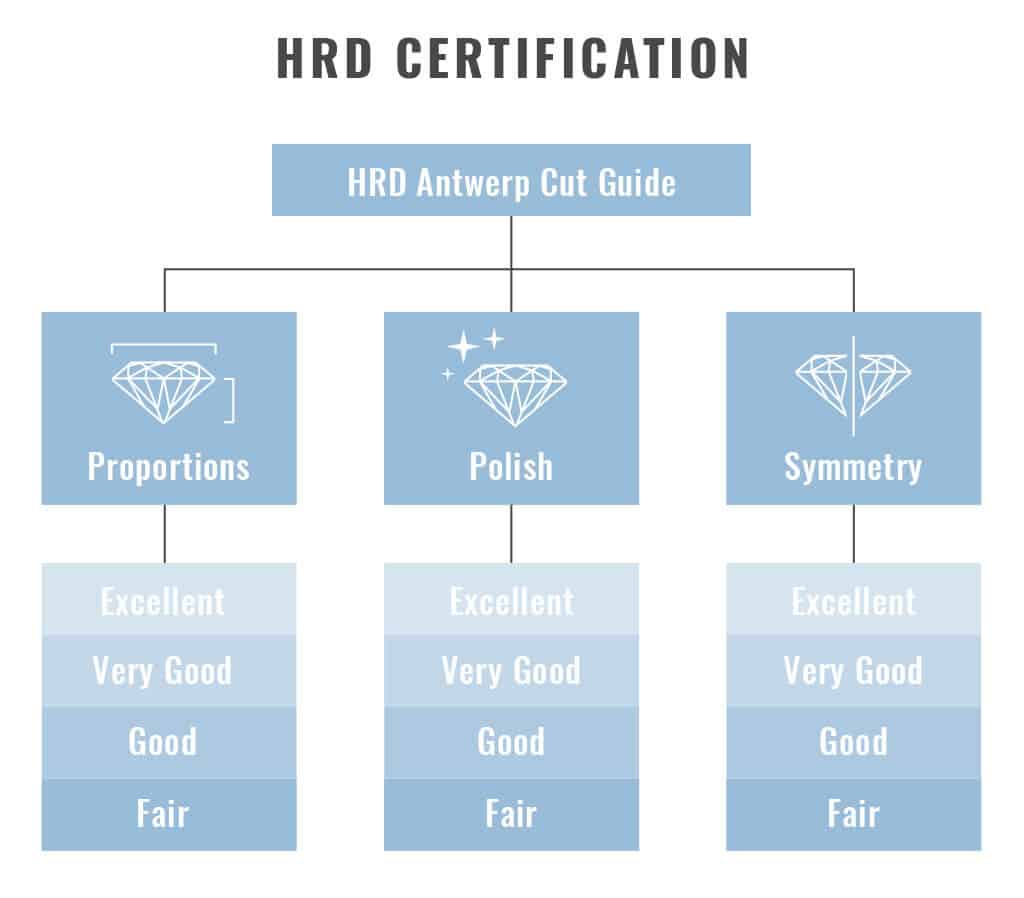The Key Takeaway
Primarily, our readers in Europe should consider this – it may seem tempting to purchase a diamond certified by HRD, but we’d encourage you to rethink it. Almost universally, it’s possible to find more value by procuring a diamond certified by the Gemological Institute of America (GIA), even accounting for VAT and shipping costs. Vendors like Whiteflash, Adiamor, B2C Jewels and James Allen, provide international shipping and advantageous conditions for buyers abroad.
Want to shop for diamonds with confidence? Join us at PriceScope for reliable, in-depth, and accurate diamond grading information. You can make an informed decision and buy the right diamond at the right price.
HRD’s Backstory
HRD, or Hoge Raad voor Diamant as it was named at its inception in 1973, has a significant presence in the European diamond and gemstone certification industry. With its headquarters based in Antwerp, Belgium, the Antwerp World Diamond Centre (AWDC) remains its main shareholder. While HRD is not generally recognized as a credible alternative in the US, it nonetheless positions itself as the global authority on diamond grading.
From our experience, we’ve noticed serious inconsistencies in HRD grading. Often, HRD grades are about two color and/or clarity grades above GIA‘s grades. Therefore, HRD-graded diamonds tend to have significantly higher prices than their GIA-graded equivalents. Consequently, diamond companies can make considerable profits at the buyer’s expense.
HRD Diamond Grading Report
An HRD report provides a comprehensive evaluation of each diamond across multiple attributes.
Essential Grading Criteria
The most critical considerations in grading diamonds are the 4 Cs – cut, color, clarity, and carat. The quality and beauty of a diamond are determined based on these criteria.
Cut and Proportions:
The cut is graded on a scale from Excellent to Poor by HRD, which also includes subgrades: proportions, polish, and symmetry.

Color:
Color grading is done on a scale from D to Z, where D is the most colorless and Z exhibits noticeable brown or yellow tints. It’s crucial to closely review the diamond and its color grading since two adjacent color-graded diamonds might look identical to the naked eye but have significant price differences.
Clarity:
HRD uses a specific scale to grade clarity, ranging from LC (Loupe-clean) to P3 (Piqué (or Included) 3). The clarity scale represents the level of cleanliness a diamond has from blemishes and inclusions.
Carat:
Carat, denoting a diamond’s weight rather than its size, is another key factor documented in an HRD certificate. The carat weight measurements are standard across all grading entities.
Further Grading Details
Beyond the 4Cs, an HRD report provides further details on fluorescence, girdle size, culet, table width, and finish grade.
Help narrow your search for round diamonds only based on potential light return, fire, scintillation, and spread based on the round proportion specifications from a grading report using Holloway Cut Advisor (HCA) tool.
HRD vs GIA – Unsettling Discrepancies
Our analysis reveals that the diamond industry often earns substantial profits due to the discrepancy between the perceived authority and consistency of HRD’s grading and the reality of its inconsistent and questionable grading.
Key Data and Experiments
Rapaport’s well-cited 2013 article, “Grading the Graders“, featured an experiment that highlighted clear grading bias and inconsistency with HRD when compared to GIA. The study underlined that while not every HRD-graded diamond will have inflated grades compared to GIA, it is indeed a likely possibility.
Advantages and Disadvantages of HRD Certification
While HRD is primarily accessible for European customers and acts as an indicator to look for alternatives, the grading inconsistencies and inflated grading may lead customers to pay more for a diamond than it’s truly worth.
Unique Reports and Additional Services by HRD
HRD also offers treated diamond grading reports, laboratory-grown diamond grading reports, preliminary diamond examinations, laser inscription, sealing, repolished diamonds, and HRD Antwerp Express.
The GIA Alternative
We strongly advise you to prefer GIA-certified diamonds due to their systematic and consistent grading methods, which lends confidence that the diamond matches the certificate’s data. If you’re based in Europe, consider purchasing from Blue Nile, which operates in the EU.
GIA Certified Diamonds at PriceScope
Do you want to learn more about diamond cut quality, color grading, and other significant factors that determine a diamond's value? Join PriceScope to access our expert-guided forums, articles, and discussions.



